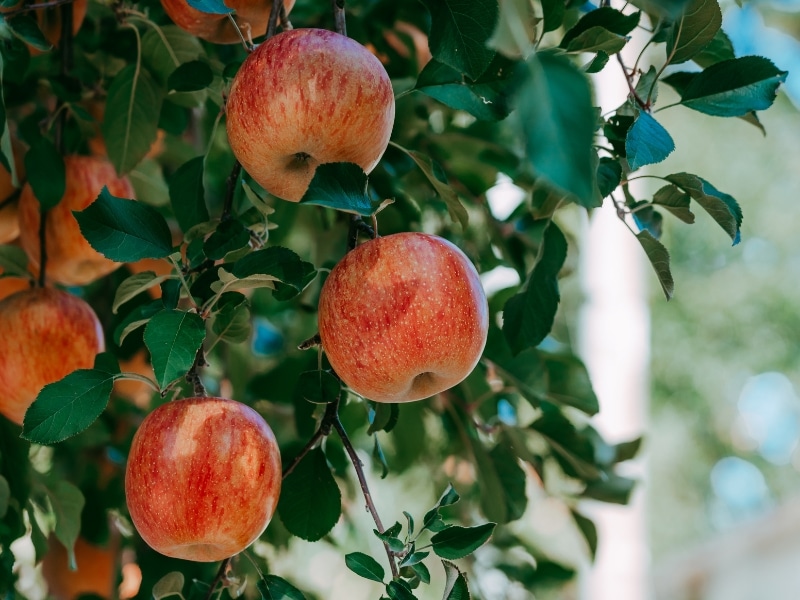Apple tree pruning isn’t just a tidy-up job — it’s a must-do if you want a tree that’s both healthy and productive. Whether you’re dealing with an overgrown backyard beauty or giving your young tree the right start, good pruning keeps things growing strong. But there’s a bit more to it than lopping off a few limbs.
This blog walks you through the why, when and how of apple tree pruning, using a step-by-step breakdown that suits Aussie yards and seasonal conditions. You’ll also learn which tools make the cut, how to dodge common stuff-ups, and where to head next if you’d rather hand the job to a pro. From seasoned gardeners to DIYers, there’s something in here for everyone looking to sort out their apple tree the right way.
Why is apple tree pruning so important?
Pruning isn’t just about shape — it’s about strength, safety and sweetness. Unchecked trees can crowd themselves out, become disease-prone, or simply stop producing the goods. Here are the main reasons pruning matters:
- Boosts sunlight exposure: More light means better fruit set and fewer issues with fungus or pests.
- Improves airflow through the canopy: This reduces the risk of disease and encourages stronger branch development.
- Removes dead or weak branches: These limbs can fall during storms or sap energy from productive parts.
- Controls the shape and size: A well-pruned tree is easier to harvest and safer to be around.
- Increases long-term yield: With proper pruning, your apple tree can produce better fruit for decades.
When should you prune your apple tree?
Timing makes a big difference. Prune at the wrong moment and you risk stressing the tree or triggering unwanted growth. Here are the best times to pick up your tools:
- Late winter or early spring (before buds open): This is the prime window for shaping and thinning. Skipping this can delay healthy regrowth.
- Summer pruning (after fruit set): Handy for size control or tidying up water sprouts, but too much can reduce next year’s yield.
- Avoid late autumn: Cuts made now don’t heal well and invite disease right before dormancy.
- Prune young trees more frequently: This helps set a good shape early and avoids heavy structural cuts later.
What tools do you need for apple tree pruning?
The right tools save you time — and your tree’s health. Blunt or unsuitable gear causes ragged cuts, which heal more slowly and can attract pests. Here are the must-have pruning tools:
- Bypass secateurs: Best for small twigs and fine detail work.
- Loppers: Use these for medium branches up to thumb thickness.
- Pruning saw: A curved blade makes cutting through larger limbs easier and cleaner.
- Gloves and eye protection: Not just for comfort — injuries from falling branches are more common than you think.
- Disinfectant or methylated spirits: Clean tools between trees to prevent spreading disease.
How do you prune apple trees step by step?
This is where the rubber hits the road. Pruning apple trees properly means thinking ahead and not taking off too much at once. Here are the key steps:
| Step | Action | Why It Matters |
| 1 | Assess tree structure | Plan your cuts before starting |
| 2 | Remove dead/damaged wood | Prevents the spread of rot and pests |
| 3 | Thin crowded areas | Opens up airflow and light |
| 4 | Cut back competing leaders | Helps shape a strong central trunk |
| 5 | Shorten long lateral limbs | Reduces breakage and balances weight |
Before you start, review this fruit tree maintenance guide to align your cuts with seasonal growth patterns and regional climate advice.
What mistakes should you avoid when pruning?
Even with good intentions, it’s easy to overdo or misjudge your cuts. And apple trees aren’t forgiving if you keep getting it wrong. Here are the most common missteps:
- Over-pruning in one session: This can shock the tree and lead to weak regrowth or no fruit at all.
- Cutting into the branch collar: Damage here delays healing and can cause long-term health issues.
- Using blunt tools: Ragged cuts leave the tree open to infection and stress.
- Topping the tree: This forces awkward growth and weakens the tree’s natural structure.
- Pruning at the wrong time of year: It’s tempting to prune whenever it’s convenient, but that’s a sure-fire way to ruin next season’s crop.
Midway through your maintenance, if you’re unsure what to remove, it might help to look at examples of pruning apple tree methods suited to your tree’s age and shape.
Can apple tree pruning support other garden projects?
Absolutely — smart pruning ties in well with your broader tree care goals. Whether you’re managing multiple fruit trees or just trying to reduce hazards, it’s a key step. Here are the ways it supports broader landscape planning:
- Reduces the risk of falling limbs near paths or structures: This keeps your yard safer and prevents expensive damage.
- Encourages complementary planting: More light means your understorey plants thrive too.
- Improves fruit quality across multiple trees: Consistent pruning schedules mean less pest pressure overall.
- Helps plan your workload: Knowing when and how to prune helps spread your garden jobs more evenly across the seasons.
This ties in neatly with our complete solutions for your tree pruning project, ensuring your apple tree fits into your long-term garden plan.
Final thoughts
Apple tree pruning doesn’t have to be complicated, but it does require planning, sharp tools and a bit of know-how. Done right, it boosts the health of your tree and the quality of your harvest — and avoids a whole bunch of headaches later on.
If you’re still unsure where to start or want an expert opinion, learn more about The Yard’s tree solutions for practical guidance.


